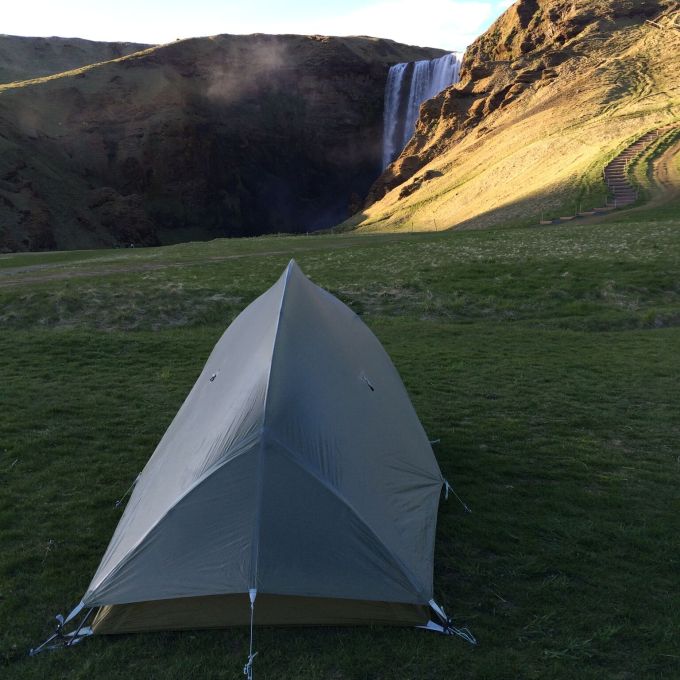Las Vegas, the city that never sleeps, what happens there stays there, just the right amount of wrong, the City of Entertainment – you get the idea.
Vegas is notorious for its lavish nightclubs, exotic locations, bigger than life hotels and casinos, and more shows than you could get through in a lifetime. Because of this, travelers looking to save money on their vacations are hesitant to choose it, out of fear of going for broke shortly after arriving at the airport (which is a valid concern, given that even the airport here has slot machines threatening to part you with your hard earned cash before you even step onto Nevada soil).
After spending 3 days there this past weekend, I’ve learned (in some cases the hard way) how to save some serious money in Vegas without sacrificing the excitement that comes along with it. As always, a small bit of preparation goes a long way. The following list outlines some effective ways to save in Vegas, divided by three major categories that affect all travelers: Transportation, Accommodation, Entertainment, and Food.
Transportation
Tip # 1: Download the Lyft App and save $10 per person for 5 rides
Lyft is a new rideshare service very similar – identical, in fact – to Uber. The problem with Uber is that everyone already has it, so there are no opportunities for first time rewards. By downloading the Lyft app, you can save $10 (USD!) off each trip up to 5 trips in total. Even better, by sending the app to your friends, they also get the $10 off 5 trips, but you get an additional $10 credit on your account. Let’s do some math to see what you could save:
For 2 people, one person downloads the app and gets $10 x 5 trips = $50 off. By sending the app to another person, they get $10 more, so $60 off. The other person also gets $50 off ($10 x 5), totaling $110.00 worth of FREE ridesharing around Las Vegas!
There are two important things to remember if you choose to do this: (1) Tips are not included in the free amount, even if your trip is less than $10, and (2) this is $10 one-way trips, so if you take a $15 trip, you still have to pay $5, even if you are under your total allowance of $50. We ended up taking a car half way, getting out, walking a block, calling another car, and finishing the trip on a new fare, essentially getting a $20 trip for free (plus $1 for adding a tip).
Tip # 2: Consider buying a monorail 24-hour pass when casino hopping
The monorail in Vegas is incredibly convenient, air-conditioned, offers great views of the city, and stops at all major casinos along the strip. Additionally, a voice-over announces the attractions at each stop, including popular restaurants and landmarks worth checking out. If you are planning on sticking to the strip for the day and want to conveniently visit each casino without making the trek from one end to the other (especially in 42 degree weather!), consider spending $12 on a 24-hour monorail pass. If you also followed the Lyft suggestion, that is best saved for short trips to non-casino destinations, or in several short trips to make a longer one (as described above).
Tip # 3: Look into free airport to hotel shuttles before paying for a taxi or Uber
This one we didn’t realize until we got to the hotel – after a $15 (CDN) Uber ride from the airport, we were told that the hotel offered free airport shuttles 24/7. In all likelihood, the majority of decent hotels in the area will offer this, as this would be a great chance for them to pick up people from the airport that haven’t chosen a hotel yet to come to theirs. Either way, don’t pay for fare from the airport. Please.
Accommodation
Tip # 1: Avoid the expensive hotels, but don’t cheap out either
Staying at The Mirage or MGM Grand will cost you big time. Personally, I’d rather spend less on the hotel and more on the experiences outside of it. That being said, if you go too cheap, you’re going to either be too far from the strip and feel out of the action, or you’re going to miss out on amenities like a swimming pool which is potentially the most gratifying thing you can have in 40+ degree weather. The hotel I booked was the Fortune Hotel and Suites, and although it was a little dated and a 15-minute walk from the strip, it had a pool, free breakfast, and free wi-fi. Other hotels to be considered are Circus Circus, where at around $80-100 per night, you can be very close to the strip, and have a theme park inside the hotel. How many people can say they rode an indoor roller coaster? Be sure to book wherever you stay well in advance to take advantage of online deals, such as those through Hotwire or Trivago (you can even set up price alerts if you have a specific budget in mind). Also, consider contacting the hotel directly and asking about their rack rate – which is the price they are willing to go down to in order to fill an otherwise empty room. This may be less common in Vegas, but you could get lucky (sorry for all of the gambling puns).

Entertainment
Tip # 1: Book shows online ahead of time and use the Tix4Tonight booth for low-cost entertainment
We booked Cirque-Du-Soleil, a gravity-defying hour and a half show where tickets can range greatly from $50 to over $300. The higher the price, generally, means the closer you are to the stage, and could lead to some audience participation with the show. However, you don’t have to choose a nose-bleed section to get a better price – a quick Google search for tickets will take you to various websites offering prices at different rates, and usually at least $10-20 less than you would pay at the venue. If you’re alright with choosing a less popular show, hop into the Tix4Tonight line at Flamingo Road and S Las Vegas Blvd. Here, you can find fairly deep discounts on a variety of shows available throughout the day along the strip and on Fremont Street.
Tip # 2: Gamble your own money on Fremont Street, people watch on the Strip
By far, the fastest way to lose your money is by gambling in any of the big name casinos along S Las Vegas Blvd. With its reputation as the most popular street in the most famous gambling city in the world, it is no surprise to see tables with minimum $20 bets, a wide variety of $5/play slot machines, and never ending poker games and high stakes areas. Keep your wallet in your pocket in these casinos, and instead hover innocuously around some of these tables, watching the bets take place by other players who are more willing to part with a day’s wages than you are. When they win, you’ll still get that dopamine hit seeing their reaction to a big increase in their chip count, and when they lose – you’ll be grateful it wasn’t you in their chair.
Obviously, you’re in Vegas, so odds are you plan on doing some gambling – the better place to do this would be off the strip, at one of the smaller gambling houses where the odds are higher and the drinks are cheaper. Better yet, gamble at Fremont Street, still incredibly popular with tourists, but a less-expensive version of S Las Vegas Blvd. It even has a cool zip line ($5 cheaper if you do it before 6 p.m.) and after the sun sets, the entire ‘Fremont Street Experience’ lights up for a dazzling display of colours and sounds. Head into the Fremont Casino for $1 minimum bets on many tables, as well as digital roulette wheels with a single 0 (European style), rather than a 0 and 00, moving the odds more in your favour. The only other advice I have on gambling is to set a limit at the start, and stay within it. It is easy to get caught up in the “one more time” mentality, but one more time is a never-ending concept. It’s fun to see money you brought to be entertained with go into the hands of the hard-working casino staff, it’s another thing to start dipping into credit cards to try to leave a winner.
One last gambling tip is to choose your poker table wisely – wait until late in the morning when slightly inebriated players join the tables, and make sure they all look like tourists, and aren’t locals. Your odds of beating slightly drunk tourists at poker are much, much higher than any other form of gambling you will be doing all weekend.
Tip # 3: Free Drinks! (For the shameless)
A lot of people think you need to be a high roller on a streak in order to get free drinks. Although this is definitely true, you can also use a more shameless approach to getting what you want. Servers will walk around with trays of drinks, taking orders from those playing at the tables. Unfortunately for them, the turnover for these players can be quite high, and the time between a drink order and getting out of your seat is often times very low. After someone leaves their seat, the server will still come by with the drink, but quickly learn that it has no owner to give it to. At this point, they take the drink back to the bar and discard it, or give it to another patron if the same drink happened to be ordered. This can be a great opportunity for you to ask the server with a tray of drinks if they have extras. If so, these extra drinks can be given away, free of charge, which is done happily by the server who would prefer to give it away than pour it down the drain. Although this technique is going to be less likely for mixed drinks, it works great for beer and water.
Tip # 4: Don’t spend money on activities you can do elsewhere – keep to Vegas attractions only
This goes without saying, but a movie theater ticket, bowling, etc. are going to cost you a lot more in Las Vegas, and are frankly a waste of time (unless you’re dying to see the next installment of Star Trek and can’t wait until the weekend is over). There is so much to see and do in Vegas that is only there, why pay more for activities that you can do at home?
Food
Tip # 1: Go to all-you-can-eat buffets to refuel, buy snack food ahead of time or at CVS or Walgreens to fill in the gaps
We struggled to find these all-you-can-eat buffets after being told they are all over Las Vegas. In fact, they really aren’t, but they do exist. The one we went to was called Paradise Buffet, in the Fremont Casino. For $18 per person (!) we were able to get a wide variety of great food, including soda, tea, coffee and desserts. The staff in the restaurant were incredibly fast at clearing plates, and the total price for 2 people was a mere $45 (USD) including tip for as much food as we could eat. To put that in perspective, I bought a chili cheese hot dog and a beer from Nathan’s earlier that day for just under $20 (USD). Nearly the same price!
When not eating meals, eating granola bars, fruit, etc. that you either bought ahead of time or at one of the convenience stores on the strip will help you save tons of money. If you’d rather sit down and eat, there are some guides that list restaurants by price, and if you’re desperate, there is a McDonald’s on the strip. I suggest avoiding this place at all costs at 3 o’clock in the morning.
Tip # 2: Buy liquor off the strip and drink it in your hotel room
Pre-drink, it works at home before a night out at the bar, so why not use the same approach in Las Vegas? Drinks can get pricey on the strip (we paid nearly $40 (USD) for two shots at The Mirage), the cost of an entire bottle of vodka at one of the many liquor stores in the area.

Tip # 3: Keep lots of water in a backpack that you carry around with you
There is NO free water anywhere in Vegas. Even the faucets in the bathrooms of the casinos are designed to make refilling a tedious task. Water fountains simply do not exist anywhere, and you pay a minimum of $1 (USD) for 400ml bottles anywhere you go.
So there you have it – Las Vegas for those who didn’t think they could ever go. If you’ve ever been, did you have any ways that you were able to save some cash? How about a horror story of where you spent way too much, and what you learned from it? Feel free to comment below! And thanks for reading!

